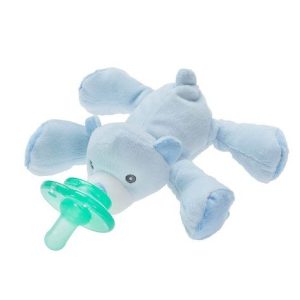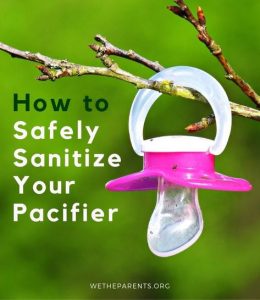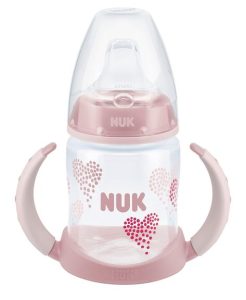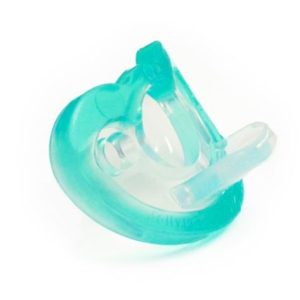Physical Address
304 North Cardinal St.
Dorchester Center, MA 02124
Physical Address
304 North Cardinal St.
Dorchester Center, MA 02124

Keeping your baby’s pacifier clean is an important part of overall hygiene. Pacifiers can easily become magnets for germs, especially when dropped on the floor or during teething. How to sanitize baby pacifiers? Fortunately, sanitizing pacifiers is a quick and easy process.
This article will explore different methods for sanitizing pacifiers, discuss how often you should clean them, and offer some additional tips for keeping your baby’s pacifier safe and sanitary.
Always sanitize a new pacifier before giving it to your baby for the first time. This removes any germs or bacteria that may have accumulated during packaging or storage.
If your baby drops their pacifier on the floor, especially outdoors or in a public place, sanitize it before giving it back to them.
It’s a good idea to clean your baby’s pacifier throughout the day, especially after each use. This can be done with warm soapy water.
If the pacifier shows signs of wear and tear, such as cracks or peeling, it’s time to replace it. Cracked or peeling pacifiers can harbor bacteria and pose a choking hazard.
If your baby or someone in your household is sick, sanitize pacifiers more frequently. This helps prevent the spread of germs.

There are three main methods for sanitizing pacifiers: boiling, steam sterilization, and using a microwave steamer.
Boiling:

Steam Sterilization:
Microwave Steamers:

Wash your hands thoroughly with soap and warm water before handling your baby’s pacifier.
Inspect pacifiers regularly for signs of wear and tear. Discard any pacifiers that are cracked, sticky, or peeling.
Avoid using harsh soaps or detergents to clean pacifiers. These can irritate your baby’s mouth.
Don’t tie pacifiers to strings, ribbons, or clothing. This can be a choking hazard.
Consider keeping a spare pacifier or two in your diaper bag for when one gets dropped or needs to be sanitized.
By following these simple tips, you can keep your baby’s pacifier clean and safe.
While boiling, steam sterilization, and microwave steamers are all effective methods for sanitizing pacifiers, there are a few additional things to consider:
Age of Your Baby: Newborns and babies with weakened immune systems may need pacifiers sanitized more frequently. Talk to your pediatrician for specific guidance on how often to sanitize pacifiers for your baby.
Travel: If you’re traveling with your baby, consider bringing a travel-sized steam sterilizer or a microwave steamer bag. These can be lifesavers when you need to clean a pacifier on the go.
Dishwasher Safe Steamers: Some microwave steamers are dishwasher safe. This can be a convenient way to clean the steamer itself. Just be sure to check the manufacturer’s instructions for proper cleaning.
Water Quality: If you have concerns about your tap water quality, you can use bottled distilled water for sanitizing pacifiers.

Over-sanitizing pacifiers can actually disrupt your baby’s developing immune system. Here are some times when you might not need to sanitize a pacifier:
If your baby drops their pacifier on a clean floor at home, you can simply rinse it with warm water before giving it back to them.
If your baby is older than 6 months and healthy, you may not need to sanitize their pacifier as frequently.
In addition to keeping pacifiers clean, it’s important to practice safe pacifier use. Here are a few reminders:
Never tie a pacifier to a string, ribbon, or clothing. This can be a choking hazard.
Replace pacifiers that show signs of wear and tear, such as cracks or peeling.
Don’t dip pacifiers in sugary substances or juice. This can cause cavities.
Let your baby’s pacifier air dry completely before storing it.
By following these tips, you can help keep your baby safe and healthy while using a pacifier.

While boiling and steam sterilization are the most common methods for sanitizing pacifiers, there are a few alternative options that can be handy in a pinch:
Soap and Water: This is a quick and easy way to clean a pacifier that’s been dropped or needs a refresh between sterilizations. Fill a small bowl with warm soapy water (use gentle dish soap) and swish the pacifier around for a few seconds. Rinse the pacifier thoroughly with clean water and allow it to air dry completely before giving it back to your baby.
Pacifier Wipes: Pacifier wipes are a convenient option for cleaning pacifiers on the go. Look for wipes that are fragrance-free and alcohol-free to avoid irritating your baby’s mouth. Be sure to wipe the entire surface of the pacifier and then allow it to air dry completely before giving it back to your baby.
Cool Mist Humidifier: While not a direct cleaning method, placing your baby’s pacifiers near a cool mist humidifier can help reduce bacteria on the surface. This can be a helpful option overnight or in between cleanings.